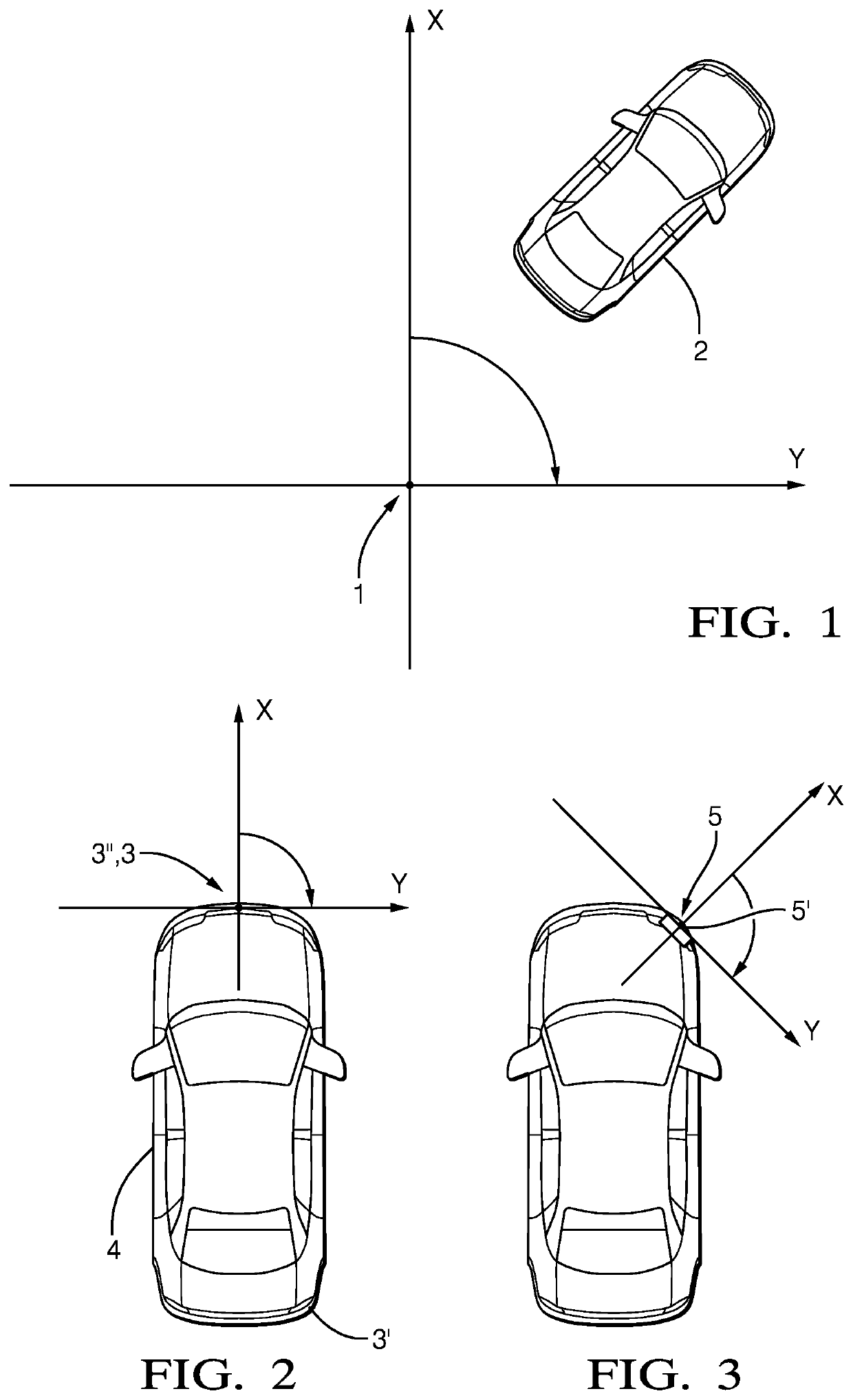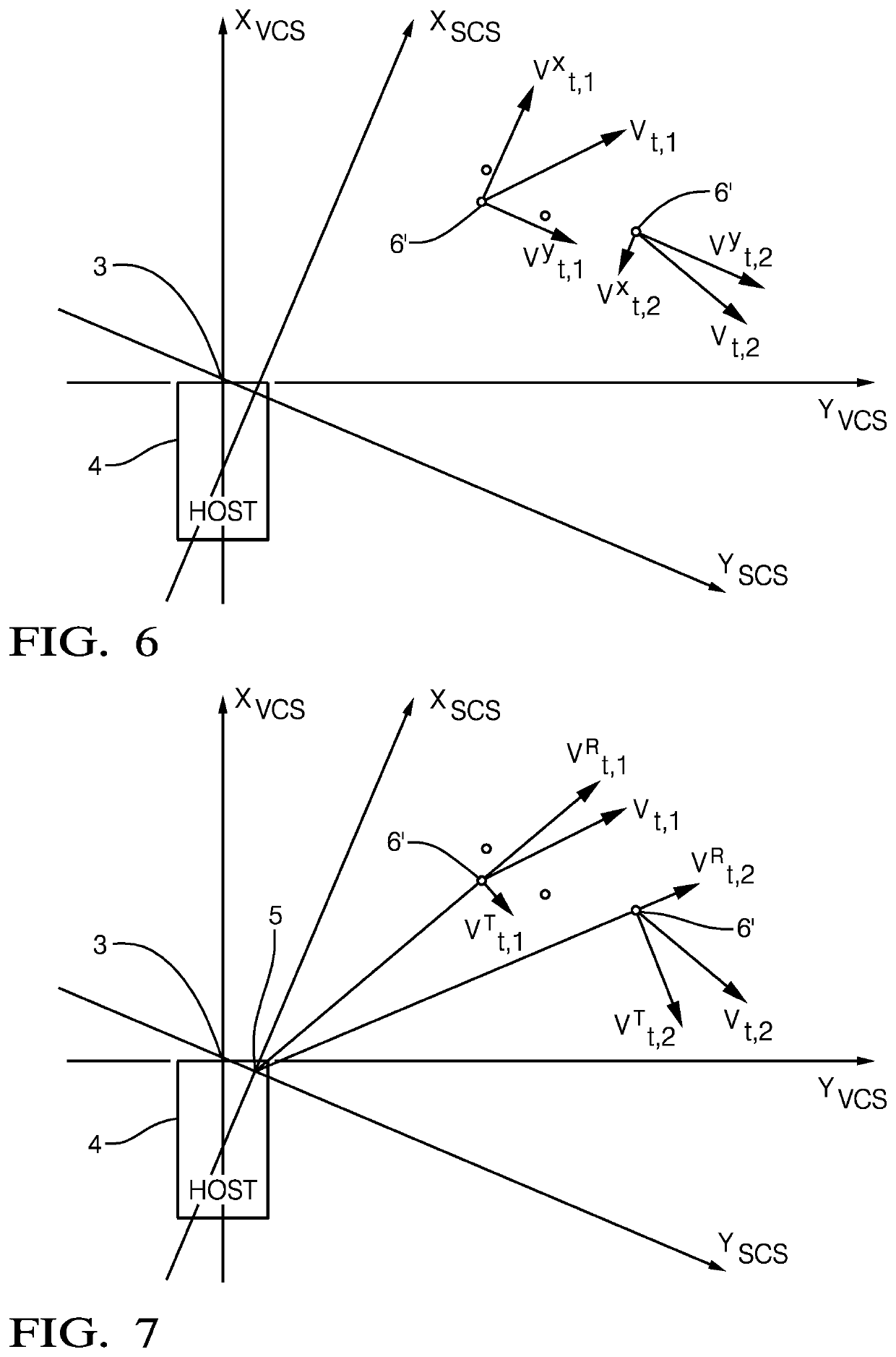Method of estimating a velocity magnitude of a moving target in a horizontal plane and radar detection system
a horizontal plane and velocity magnitude technology, applied in the field of radar detection, can solve the problems of degrading affecting the accuracy of estimation, and not always accurate estimation of target velocity, so as to improve the accuracy of method estimation, reduce computational complexity, and improve the effect of calculation results
- Summary
- Abstract
- Description
- Claims
- Application Information
AI Technical Summary
Benefits of technology
Problems solved by technology
Method used
Image
Examples
implementation example
[0154]The proposed algorithm was implemented in a vehicle in order to assess the performance of an object hypotheses algorithm. The proposed object hypotheses algorithm is used for velocity estimation in case of valid orientation estimation and invalid velocity estimation.
[0155]FIG. 10 shows a flow chart indicated the steps of the process flow of the object hypotheses velocity run algorithm that can be implemented in the evaluation unit of the radar detection system 5′. The process starts at box 20 at box 22 a decision is made whether the object hypotheses model is a point model or not.
[0156]If the decision is made that the object hypotheses model is a point model, then a decision is made at box 24 whether the azimuth rate is invalid.
[0157]If this is the case then a velocity status of the nearest detection is verified at box 26. If a decision is made that the velocity status of the nearest detection is verified then a decision is made at box 28 that the range rate is the same as the...
PUM
 Login to View More
Login to View More Abstract
Description
Claims
Application Information
 Login to View More
Login to View More - R&D
- Intellectual Property
- Life Sciences
- Materials
- Tech Scout
- Unparalleled Data Quality
- Higher Quality Content
- 60% Fewer Hallucinations
Browse by: Latest US Patents, China's latest patents, Technical Efficacy Thesaurus, Application Domain, Technology Topic, Popular Technical Reports.
© 2025 PatSnap. All rights reserved.Legal|Privacy policy|Modern Slavery Act Transparency Statement|Sitemap|About US| Contact US: help@patsnap.com



